
The snowboard season is just around the corner, and choosing the right snowboard is crucial for a great time in the mountains. Whether you're a beginner or a seasoned pro, the right board makes all the difference. In this guide, we’ll break down all the key factors involved in choosing the right snowboard for you.
What is a beginner snowboard?
Choosing your first snowboard can be the hardest step—after all, you’re still discovering the sport. That’s why it’s a good idea to rely on the experience of your local boardshop. A beginner snowboard should help you progress quickly and build confidence. Here are a few important features to look for:

Soft Flex
Beginner boards usually have a softer flex, making them more forgiving and easier to control. This helps you learn to turn more easily and reduces the chance of falls.
Twin Shape
A true twin-shaped snowboard helps beginners feel stable and balanced, making it easier to pick up the basics. We’ll explain more about what twin shape means later on.
Forgiving Profile
Profiles like rocker, flat, or hybrid prevent catching edges—one of the biggest frustrations for beginners. These designs help you learn faster and fall less.
Choosing the right beginner snowboard can make your learning process more enjoyable and much faster. Take your time, compare models, and if possible, test a few boards before making a final decision. With the right board under your feet, you’re all set for an amazing time on the slopes!
All-Mountain / Freeride / Freestyle: What's the Difference?
There are many different snowboarding styles, and understanding the difference between all-mountain, freeride, and freestyle boards is key when selecting the right one for your needs.
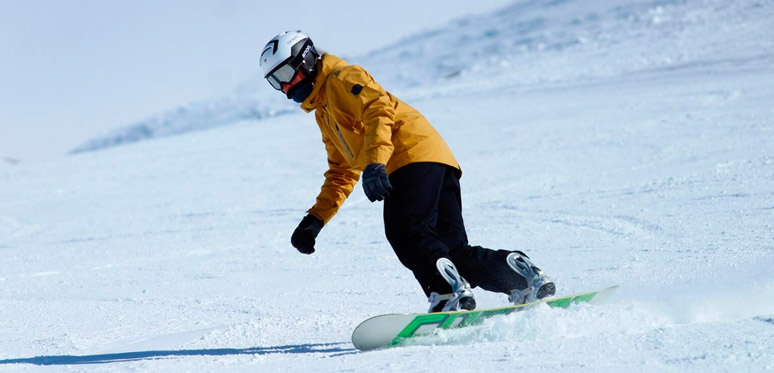
All-Mountain
The most versatile option for riders of all levels. Whether you're on groomed trails, in the park, or exploring off-piste, an all-mountain board handles it all. These boards offer a good balance of flexibility, stability, and control.
All-Mountain Boards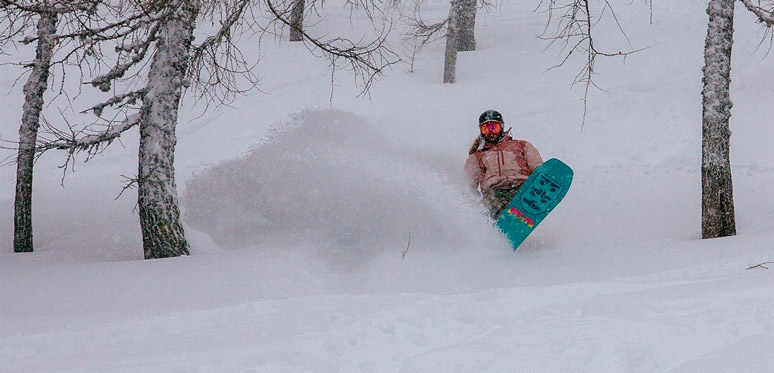
Freeride
Freeriding is all about off-piste adventures and powder. These boards often have a directional shape and are designed to float better in deep snow. They typically feature a stiffer flex and rocker profiles for better control.
Freeride Boards
Freestyle
Think jumps, tricks, and time in the park. Freestyle boards are flexible, slightly shorter, and often twin-shaped. This helps with riding and landing switch and makes them great for rails and jumps.
Freestyle Boards
How to Choose the Right Snowboard Size
One of the most important aspects of snowboard shopping is getting the right size. A board that’s too long or short can affect your performance and enjoyment. Here's what to consider:
1. Weight
Your body weight determines how much board you need. Heavier riders usually need longer boards for stability, while lighter riders benefit from shorter, more maneuverable boards.
2. Shoe Size
If you have large boots, make sure your board is wide enough to prevent toe drag. Riders with larger feet may need a "wide" snowboard for better balance and safety.
3. Experience
Beginners often prefer shorter boards since they are easier to control, while advanced riders may choose longer ones for better performance at high speeds.
4. Riding Style
If you're into freestyle, go for a shorter board. If you love freeride and speed, a longer board will give you the control you need.
5. Personal Preference
At the end of the day, your riding style and comfort matter most. Try different sizes if you can and trust what feels right.
Conclusion
Use manufacturer size charts based on your weight and boot size to make an informed choice. And when in doubt—ask us!
Snowboard Length Guideline
This table provides a general guideline for ideal snowboard length based on weight and height. However, it's important to consider the other factors mentioned above. Be sure to visit your local boardshop to find the perfect board length for your style and experience.
| Weight (kg) | Height (cm) | Ideal Snowboard Length (cm) |
|---|---|---|
| 40 - 50 | < 150 | 110 - 130 |
| 50 - 60 | 150 - 160 | 130 - 140 |
| 60 - 70 | 160 - 170 | 140 - 150 |
| 70 - 80 | 170 - 180 | 145 - 155 |
| 80 - 90 | 180 - 190 | 150 - 160 |
| 90 - 100 | 190 - 200 | 155 - 165 |
| 100 - 110 | > 200 | 160 - 170 |

Snowboard Profile Types
The profile—curvature—of a snowboard base has a big impact on how it rides. Here’s a breakdown of the most common profiles and their characteristics.
Camber
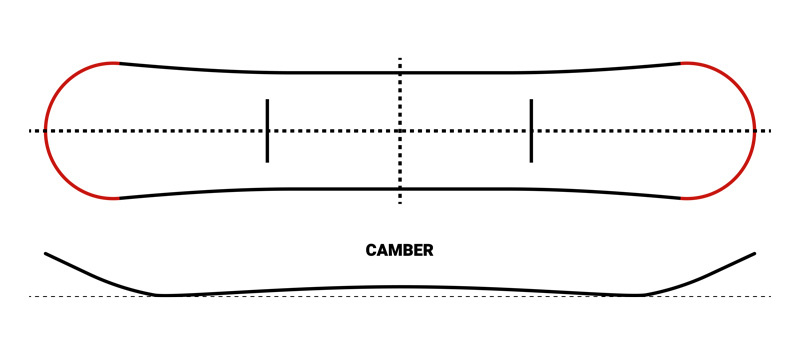
A traditional camber arches upward under the middle. It offers stability, pop, and excellent edge grip. Great for carving and precise control.
Flat
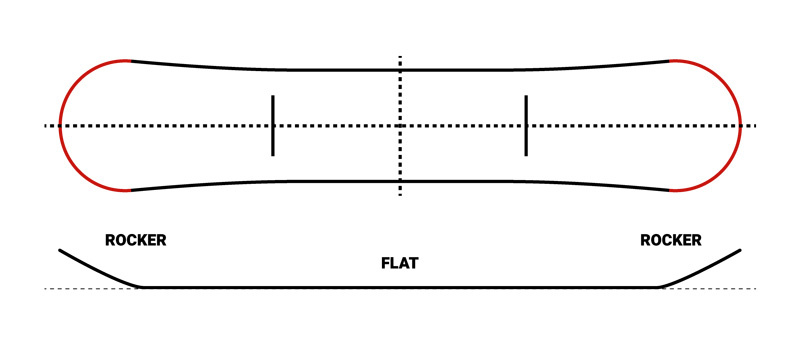
Flat profiles are stable and offer long edge contact for easy grip. Popular with beginners and park riders for their balance and pop.
Rocker

A rocker profile curves upward at the tips. This makes the board more maneuverable, forgiving, and better suited for powder.
Hybrid

Hybrid profiles combine camber and rocker zones to deliver the best of both worlds. They're versatile and perform well across all terrains.

Snowboard Shapes
The shape of a snowboard affects how it rides and what type of terrain it’s best for. Here are the most common shapes:
True Twin
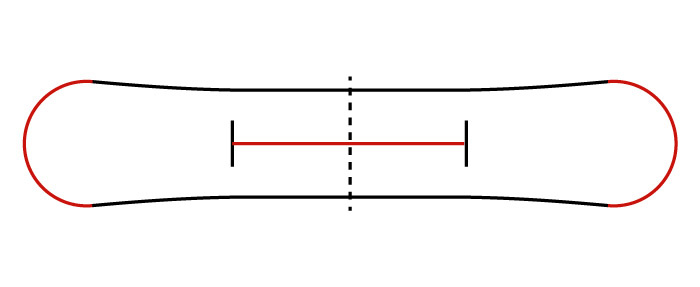
Completely symmetrical front to back. Perfect for riding switch and popular with freestyle riders.
Directional

Designed to be ridden mostly in one direction. Offers extra stability at high speeds and performs well for carving.
Directional Twin
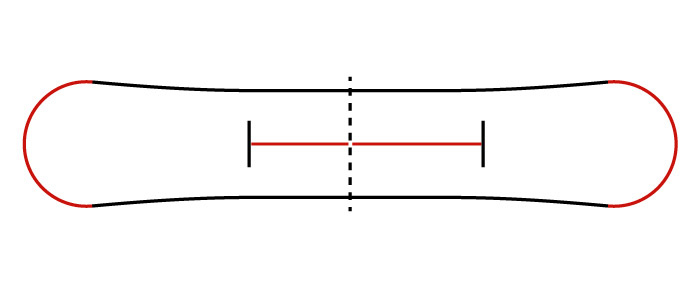
Similar to directional boards, but optimized for riding switch as well. Good mix of freestyle and all-mountain performance.
Asymmetrical Twin
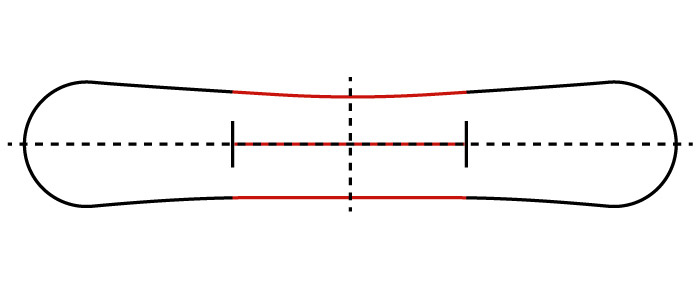
Heel and toe edges are shaped differently for better balance and control when turning. Improves edge-to-edge transitions.

Sintered vs Extruded Bases
The base of your snowboard—the layer that touches the snow—affects your speed and durability. Choosing the right one depends on your riding style and how much maintenance you’re willing to do.

Sintered Base
Made by compressing and heating material, sintered bases are fast and hold wax well. Great for powder and speed, but require regular waxing and are more expensive.

Extruded Base
Cheaper and more durable, but slower due to lower wax absorption. If maintained well with regular waxing, they can still perform great at a lower cost.

Conclusion
Choosing the right snowboard helps you make the most of your time on the mountain. There's no one-size-fits-all answer—it depends on your style, goals, and terrain. Take your time, try different boards if possible, and get expert advice. With the right gear, you're ready for a winter full of fun and progression. Stay safe and have fun!

